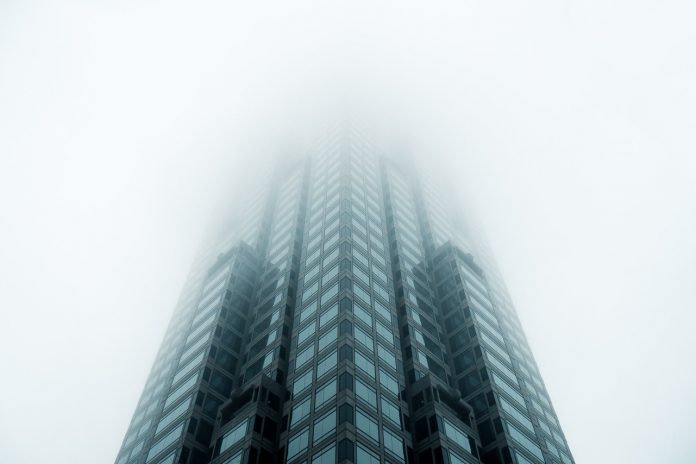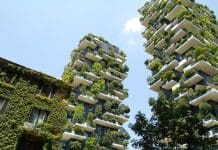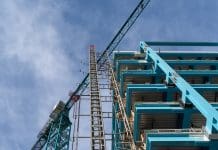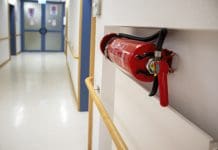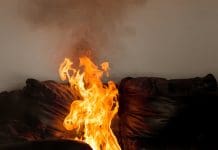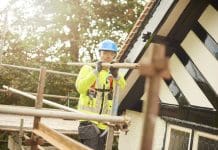David Mowatt, chairman of the Smoke Control Association, highlights the need to raise standards and levels of competency in relation to the design, installation and maintenance of smoke control systems in high-rise buildings
In the event of a major fire, smoke inhalation is often more of a threat to life than direct exposure to the fire itself, obscuring escape routes, causing panic and confusion, and overcoming occupant before they are directly exposed to the fire itself.
Unless smoke is controlled and properly ventilated, vital escape routes can become inaccessible – both for occupants trying to escape and for firefighters entering the building. A robust smoke control system that has been properly designed, installed and maintained can ultimately save lives when incorporated into a wider fire engineering strategy.
Key design considerations
When considering a smoke control system in any high-rise building, it is important to recognise that no matter the system type, it should be part of an overall fire engineering strategy and should not be designed in isolation.
The designer of the smoke control system should ensure that the proposed solution complements the fire safety strategy and provides the necessary levels of protection, in the same way that the architect and fire engineer should ensure that the building layout provided to the designer is entirely accurate and up to date.
Designers should also consider requirements contained with the Building Regulations, the Construction (Design & Management) Regulations, the Workplace (Health, Safety & Welfare) Regulations, the Regulatory Reform (Fire Safety) Order and any other relevant legislation.
Regulatory reform
Following the tragic Grenfell Tower fire, a number of organisations were brought together to form a steering group capable of taking forward the key recommendations laid out in Dame Judith Hackitt’s Independent Review of the Building Regulations & Fire Safety.
Work has subsequently begun to improve competences for those working on the design, construction and operation of higher risk buildings and this encompasses installer competence, product testing and certification.
The process of identifying and developing specific competency frameworks and accreditation pathways has been taken on by 12 working groups – Engineers, Installers, Fire Engineers, Fire Risk Assessors, Fire Safety Enforcement Officers, Building Control/Standards Inspectors, Building Designers/Architects, Building Safety Managers, Site Supervisors, Project Managers, Procurement and Products.
Raising standards
As is the case with other specialist sectors within the built environment, the smoke control industry has, until now, remained unregulated, making it difficult to assess the overall competence of suppliers and contractors. However, it is critical that smoke control systems are installed and maintained by a competent person with the necessary expert knowledge in order to ensure optimum performance should a fire break out in the building.
As part of a sustained campaign to raise standards, all SCA members who install smoke control systems are now required to apply for and receive SDI 19 Certification scheme accreditation, guaranteeing that they are suitably skilled and experienced in fire strategy verification, system design, installation and commissioning in accordance with the following standards and industry guideline documents:
- Approved Document B.
- Approved Document B NI (Northern Ireland).
- Technical Handbook (Scotland).
- BS 9999.
- BS 9991.
- BS 7346 Parts 4, 5, 7 and 8.
- BS 8519.
- BS 8524.
- EN 12101 Part 6.
- Technical Reports 12101-4 & 5.
- SCA Guidance Documents.
Certified contractors will have clearly demonstrated that their trained staff consistently adhere to industry best practice and fully appreciate the importance of correct installation, inspection and maintenance, ultimately providing peace of mind for the consultant and building operator.
Maintenance programme
A comprehensive maintenance programme is every bit as important as appropriate design and installation but can often be overlooked or simply forgotten about.
BS EN 12101 and BS 9999 document maintenance requirements for both natural and powered smoke control systems, advising that life-critical equipment should be included in a building services maintenance schedule. These standards also stipulate the frequency of tests and offer advice on what should be checked on a weekly, monthly or yearly basis.
If a smoke control system fails, the consequences can be truly catastrophic. Therefore, the building operator has a duty of care to ensure that when they are looking to put a maintenance plan in place, they check that maintenance contractors are suitably qualified and fully understand the system they are working with.
Change for the better
It is hoped that a more robust regulatory framework is now just around the corner, a framework that includes clearer standards and guidance for everyone involved in the design, construction and operation of high-rise buildings. There can be no excuses when it comes to fire safety and raising standards and improving competencies will ultimately save lives.
Further information on the SCA can be found at: www.feta.co.uk/smokecontrol

David Mowatt
Chairman
Twitter: SmokeContAssoc
LinkenIn: Smoke-Control-Association


